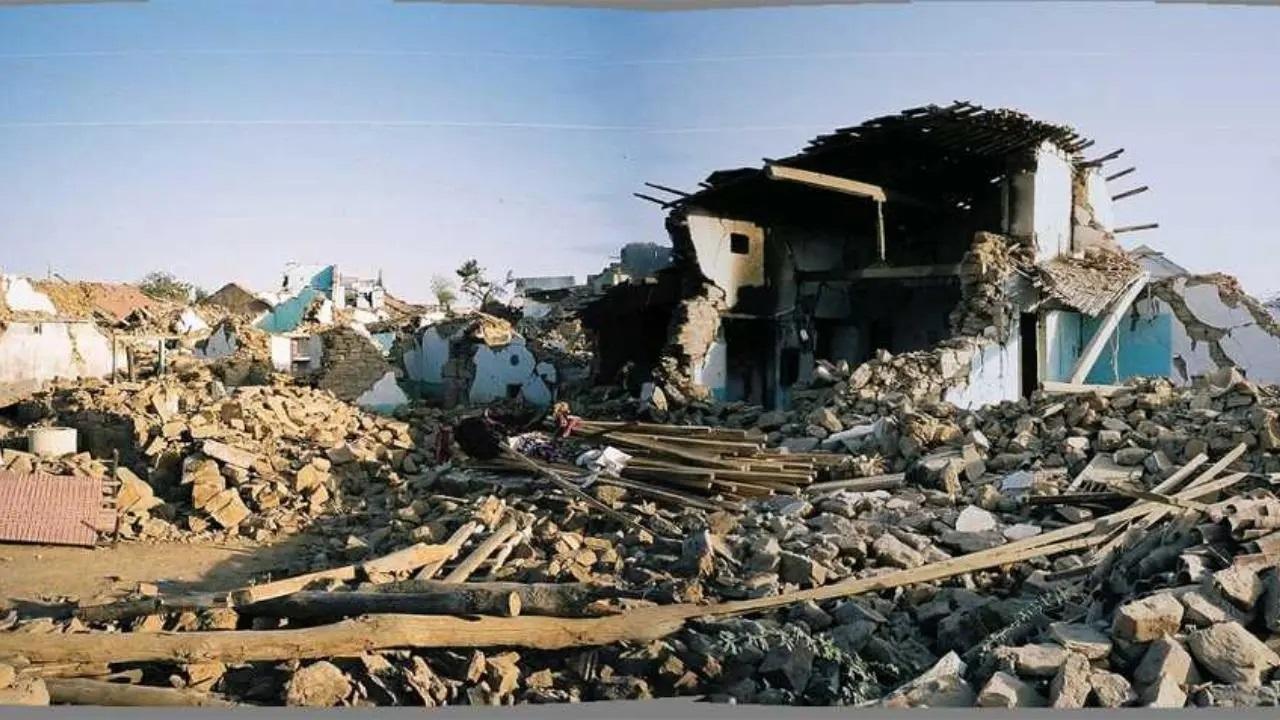The 2001 Gujarat earthquake, also known as the Bhuj earthquake, occurred on January 26 at 8.46 am

2001 Gujarat Earthquake. Pic/Bhuj Area Development Authority
The 2001 Gujarat earthquake, which occurred on January 26, 2001, was a devastating seismic event that left an indelible mark on the state of Gujarat.
2001 Gujarat Earthquake: When and where did the earthquake hit Gujarat?
The 2001 Gujarat earthquake, also known as the Bhuj earthquake, occurred on January 26, 2001 at 8.46 am. The earthquake's epicenter was near the Bhuj district. The epicenter was about 9 km south-southwest of the village of Chobari. The aftermath was catastrophic, with widespread destruction, loss of life, and significant economic impact.
The quake struck at 8:46 AM local time, catching the region off guard and causing severe damage to infrastructure. Towns and villages were reduced to rubble, and critical facilities such as hospitals and schools were heavily impacted. The city of Bhuj bore the brunt of the quake, with many structures collapsing and leaving thousands homeless.
2001 Gujarat Earthquake: The aftermath
According to the Bhuj Area Development Authority, about 13,800 people died and 1,67,000 were injured. Nearly 1.2 million houses were damaged. "All the civic facilities like – schools, hospitals, health centers and public buildings – suffered massive destruction. The utility infrastructures, which included water supply, electricity and telecommunications, were also completely disrupted," Bhuj Area Development Authority said on its website.
"The massive damage put the government to pose an enormous challenge to evolve and execute a comprehensive rehabilitation and reconstruction programme. The four towns of Kachchh-Bhuj, Bhachau, Anjar and Rapar- needed much attention as they suffered very large-scale devastation. In Bhuj city itself, 2370 people died, 3187 suffered massive injuries, 11036 houses were fully collapsed and 27617 houses partially collapsed," Bhuj Area Development Authority said on its website.
The earthquake not only claimed lives but also left countless families displaced and grappling with the emotional and physical aftermath. The rescue and relief efforts were massive, involving both national and international assistance to cope with the scale of the disaster.
Four months after the earthquake the Gujarat government announced the Gujarat Earthquake Reconstruction and Rehabilitation Policy. The policy proposed a different approach to urban and rural construction.
The main objectives of the policy included repairing, building, and strengthening houses and public buildings. Other objectives included the revival of the economy, health support, and reconstruction of the community and social infrastructure.
In conclusion, the 2001 Gujarat earthquake was a tragic event that had profound and lasting effects on the region. While it brought immense challenges, it also served as a catalyst for positive change, prompting efforts to enhance disaster resilience, response capabilities, and community preparedness.
 Subscribe today by clicking the link and stay updated with the latest news!" Click here!
Subscribe today by clicking the link and stay updated with the latest news!" Click here!










